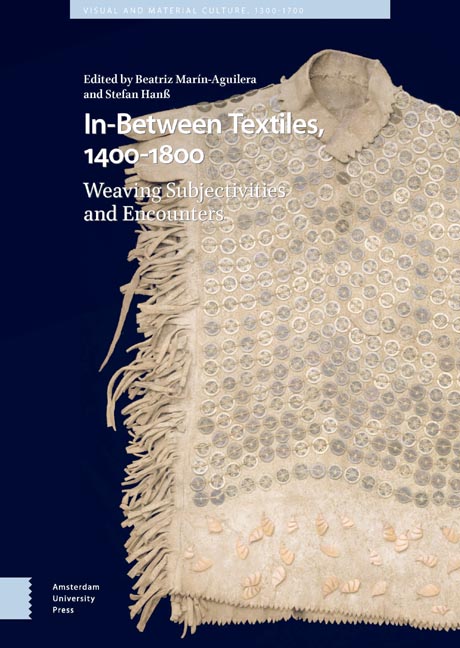Book contents
- Frontmatter
- Dedication
- Miscellaneous Frontmatter
- Table of Contents
- List of Illustrations
- Acknowledgements
- 1 Subjectivities In-Between Early Modern Global Textiles
- Part I Unhomeliness, Mimicry, and Mockery
- Part II The Material Enunciation of Difference
- Part III Identity Effects In-Between the Local and the Global
- Part IV Material Translation and Cultural Appropriation
- Archives, Libraries, and Museums (Abbreviations)
- Select Bibliography
- Index
11 - In-Between the Global and the Local: Silk in Seventeenth- and Early Eighteenth-Century Russia
Published online by Cambridge University Press: 14 October 2023
- Frontmatter
- Dedication
- Miscellaneous Frontmatter
- Table of Contents
- List of Illustrations
- Acknowledgements
- 1 Subjectivities In-Between Early Modern Global Textiles
- Part I Unhomeliness, Mimicry, and Mockery
- Part II The Material Enunciation of Difference
- Part III Identity Effects In-Between the Local and the Global
- Part IV Material Translation and Cultural Appropriation
- Archives, Libraries, and Museums (Abbreviations)
- Select Bibliography
- Index
Summary
Abstract
This chapter charts the identity politics related to silk textiles in seventeenth- and eighteenth-century Russia by examining silk trade and acquisition, the introduction of new practices, as well as attempts to develop silk manufacturing. The chapter discusses the early development of the Russian silk industry in the context of localised consumption and mercantilist policies. This chapter argues that silk fabrics became transformed from globally traded artefacts into tokens of local identity politics. They turned into in-between textiles negotiating and driving societal change between Self and Other, where the Other signified not only the territorial and cultural Other, but also old forms of life within Russia. These textiles helped to create the in-between space where cultural values and notions of selfhood underwent negotiation. Silk textiles were crucial tools that materialised identities at a time when Russia became embedded in an increasingly globalised world.
Keywords: silks; Russia; mercantilism; global consumerism; identity politics
Introduction
Silk shaped the processes of early globalisation that affected Russia, by creating networks of cultural, political, and commercial connections between the East and the West. The new “cosmopolitan material culture” of the early modern period, as Beverly Lemire suggests, “redefined material life, social practice and commercial enterprise” and became “emblematic of evolving economic, social and political systems.” This chapter explores these changes and charts the identity politics related to silk textiles in seventeenth- and early eighteenth-century Russia by examining silk trade and acquisition, the introduction of new practices, as well as attempts to develop silk manufacturing. The chapter discusses the early development of the Russian silk industry in the context of localised consumption and mercantilist policies. I argue that silk fabrics became transformed from globally traded artefacts into tokens of local identity politics. They turned into in-between textiles negotiating and driving societal change “between Self and Other,” where the Other signified not only the territorial and cultural Other, but also old forms of life within Russia. These textiles helped to create what Homi Bhabha calls “the in-between space” where cultural values and notions of selfhood underwent negotiation. The textiles were crucial tools that materialised identities in a time when Russia became embedded in an increasingly globalised world.
- Type
- Chapter
- Information
- In-Between Textiles, 1400-1800Weaving Subjectivities and Encounters, pp. 241 - 264Publisher: Amsterdam University PressPrint publication year: 2023



